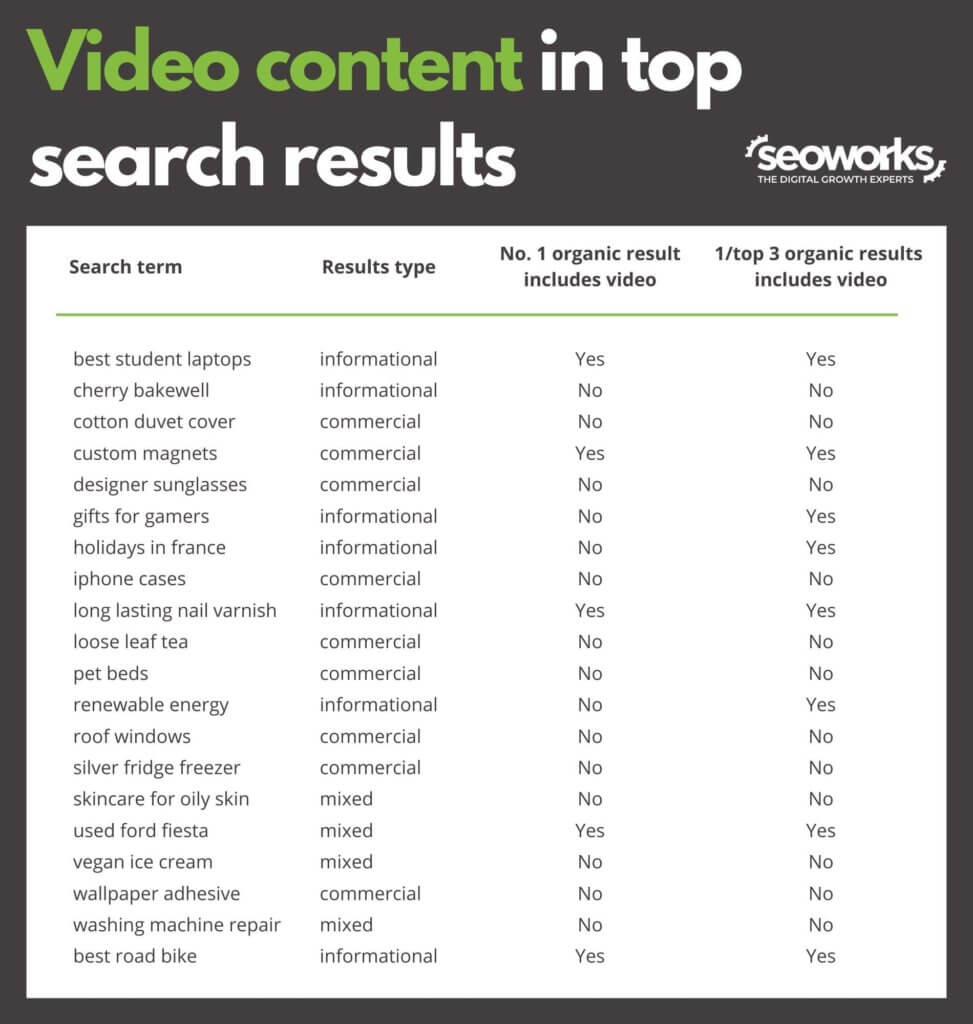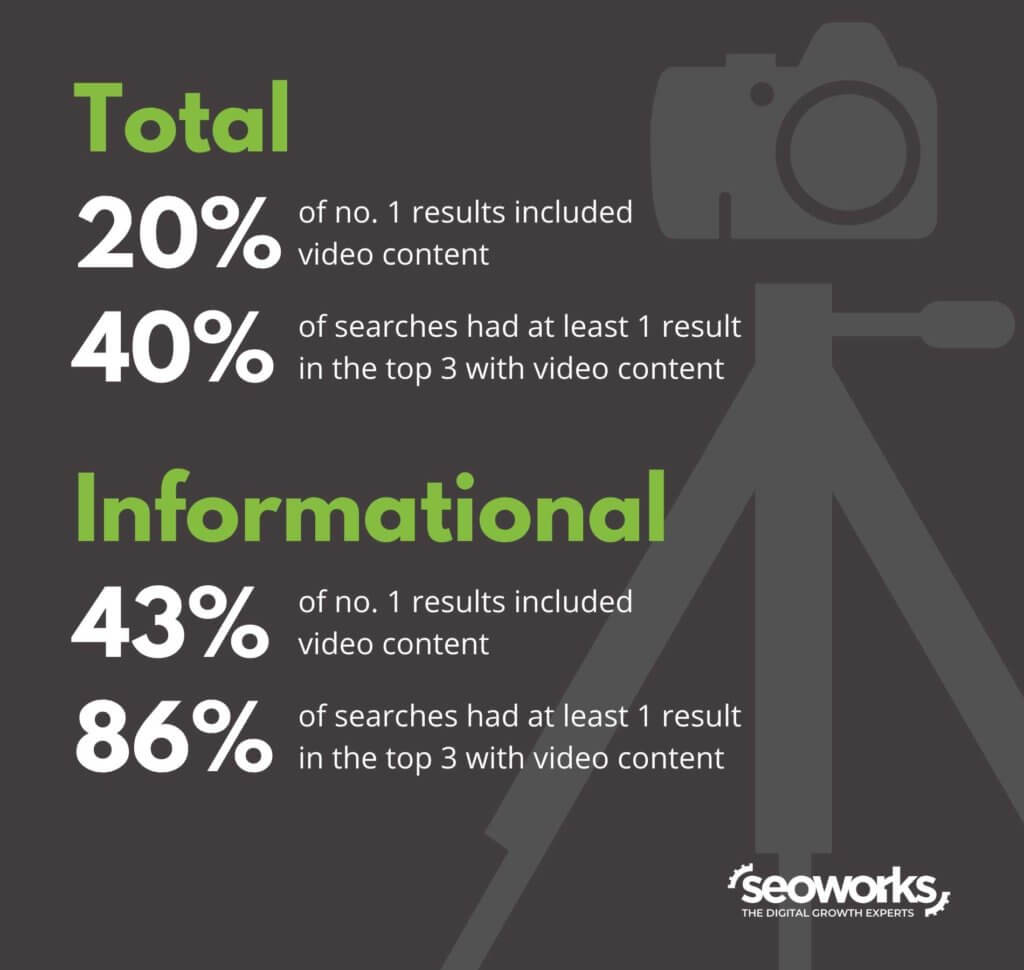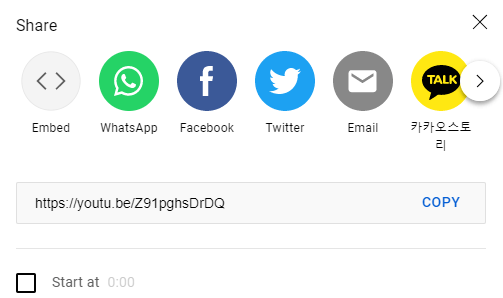Video SEO: Using Videos for SEO
Videos can be a powerful tool to engage with your audience, present information and enhance your offering. But videos can also be used for SEO – search engine optimisation. They can help to drive traffic to your website and improve a user’s experience.
Want to learn more about using videos to improve visibility? Read our blog on YouTube SEO.
We’re going to cover how to:
Do videos help SEO?
Including videos on a page is not a (published) ranking factor, but videos can be used to enhance your page’s performance and to improve your overall SEO.
There are some key ways in which videos can help your website.
Use videos to support on-page content
Videos can be used to support existing page content.
Google has not said that video content is a ranking factor, but there are still several reasons why including video in your content is helpful for SEO.
Improve accessibility
Videos provide an alternative way of accessing page content, which can be helpful for accessibility.
Not everyone finds it easy to access written content. Providing alternative methods of accessing information, such as text-to-voice or videos, helps a greater number of people engage with the content. It can also help people to learn and remember the information more effectively.
While accessibility in itself is not a direct ranking factor, we are seeing more accessibility metrics appearing as ranking factors. As an example, Google added core web vitals as a ranking metric last year.
Google wants everyone to be able to access the internet and it wants to ensure that the results it presents to people can be accessed by everyone.
It’s possible that future algorithm updates will see further accessibility factors featuring as ranking metrics. Creating a website and page content that’s as accessible as possible puts your website in the best position to succeed in the future. Not only that, it ensures that everyone can access your content, maximising potential.
Be sure not to rely on video exclusively though as this will result in accessibility issues rather than enhancements!
Learn more about how to make a website accessible.
Pages with video content often rank better
While Google hasn’t said videos are a ranking factor, I wanted to see how many of the top results contain videos for myself.
I tested 20 unrelated keywords from a mix of industries to see if the top organic result pages contained videos in their page content.

20% of the number one organic results contained video on the page. In 40% of searches, at least one of the top three results contained video content on the page.
This included a mixture of commercial (eCommerce and service pages) and informational results.
When we look specifically at informational results, the data is even more revealing.
Here, 43% of the number one results contained video content in the page and, in 86% of searches, at least one of top 3 organic results included video on the page.
This data suggests that if you’re producing informational content, it could be extremely helpful to include video.
The data is, of course, not conclusive. I only tested 20 keywords and it also doesn’t necessarily indicate that video content in a page is a ranking factor. There could be other correlations and metrics at play – for example, it’s possible that the pages that include video content also go to more lengths to develop stronger written content, improving rankings.
However, it does give us some initial insight on the importance of video.
Why not conduct some industry-specific research? Take 20 keywords within your niche and see how many of the top pages also contain video content. This could inform your strategy and help you to spot opportunities to enhance your pages with video content in order to boost rankings.

Video schema markup
When including a video on your page, you can add in video schema markup, or structured data. This doesn’t directly improve rankings, but is helpful when using videos for SEO.
When done right, it results in a video thumbnail next to your organic search results. This drives clicks and could help to improve your organic click through rate.

Use videos to drive traffic
If you choose not to include a video in your page content, you can still produce video content that drives traffic by hosting it on YouTube and ranking in these results.
If your videos are well branded, they will help to improve brand awareness. Over time, this improves customer loyalty, can increase people searching for your brand and can increase website and foot traffic.
YouTube links
Links in YouTube descriptions are ‘nofollow’. This means they don’t pass on link equity to your website.
However, including a link in the video description is still valuable.
If the link will take the user to a helpful page where they can find additional information, it can drive traffic to your website.
Want to learn more about optimising video to rank in YouTube? Read our blog on YouTube SEO.
Avoid common video SEO mistakes
Here are a few tips so, when using videos for SEO, you don’t end up with more negative effects than positive.
Page speed
Videos do affect page speed, which is a ranking factor. The best way to include video content on your page is by embedding content hosted on an external site, such as YouTube or Vimeo.
This reduces the negative impact videos will have on page speed.
The alternative, of hosting the video yourself, usually results in a harder hit to your page speed, which could negatively affect rankings.
To do this, simply click ‘share’ on the YouTube video and then ‘embed’. This will provide you with the html code.
Then insert this into your page.

Written content
A video should support written content. If you have a page that is only a video, Google will struggle to understand what the page is about. Google often stops crawling pages with very little content, known as ‘thin content’, as it doesn’t see it as a high quality page.
If you’re going to include video, ensure it’s there to support high quality written content.
Even if the video is the main star, surround it with plenty of written content to support the video. This also helps to ensure that the page is still accessible to someone with visual impairments, for example.
Autoplay
If you’re including a video, be sure it doesn’t autoplay.
This has a negative impact on bounce rate and will likely have a lot of people leaving your page immediately.
It’s also not helpful for accessibility. Those using screen readers, for example, might not be able to hear their screen reader over the sound of the video and might find it difficult to turn it off.
Videos are an extremely powerful communication tool. When done right, they can improve brand awareness, build trust with your customers and drive traffic to the website, but this does require effective video SEO.
If you want to learn more about using videos to improve visibility read our blog on YouTube SEO.

Molly is an SEO Team Leader who studied English Literature at university. She loves writing content, solving SEO-related problems and correcting grammar!

